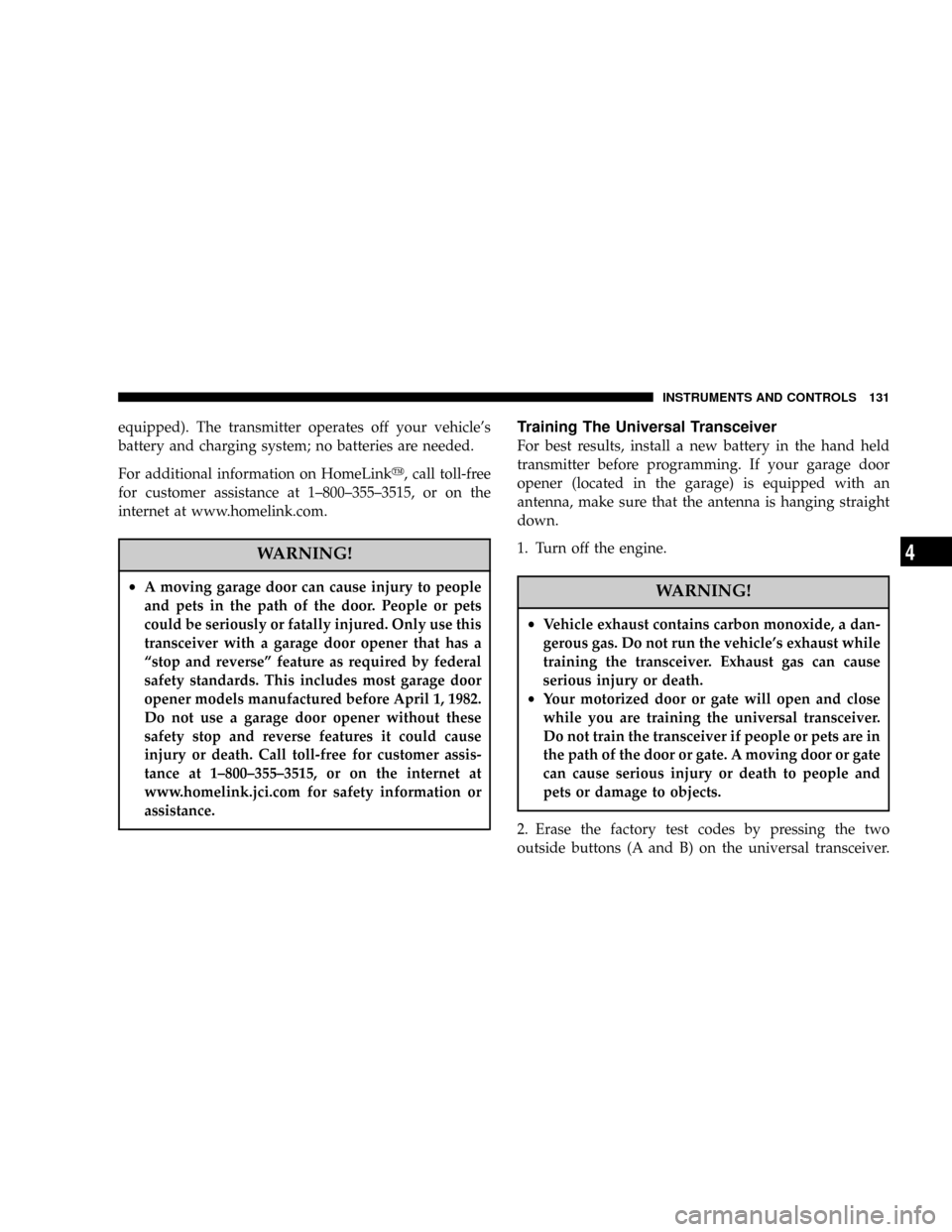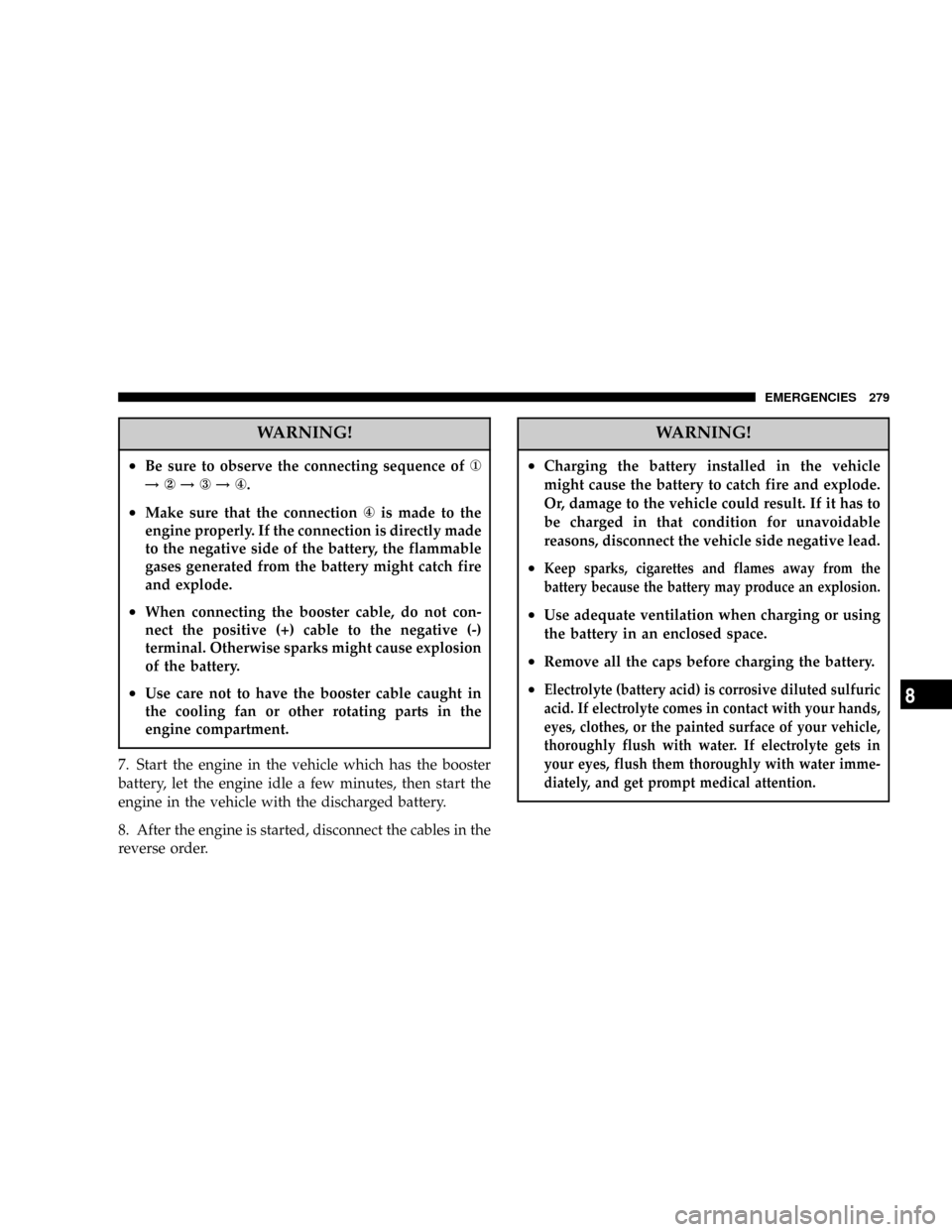Page 11 of 382
If this warning light comes on¼
Warning light Do this Ref. page
Charging system warning light´Park the vehicle in a safe place and turn off the engine.
Check the alternator belt.
If the belt is loose, broken, missing, or if the light remains
on when the ignition key is turned back on, call an
authorized dealer for assistance.P. 1 1 2
ªNº indicator light in the
instrument cluster flashes rapidly
(twice per second)´Park the vehicle in a safe place.
Idle the engine until the warning light goes off. If the
light does not go off, have your vehicle inspected at an
authorized dealer.P. 157
INTRODUCTION 11
1
Page 101 of 382

INSTRUMENTS AND CONTROLS
CONTENTS
mInstrument cluster......................104
NMeter cluster.........................104
NIndicator and warning light package........105
NSpeedometer.........................106
NTachometer..........................106
NFuel gauge..........................107
NOdometer/Trip odometer................108
NEngine coolant temperature gauge..........109
NTurn signal indicators/hazard warning lights . . 110
NHigh beam indicator...................110
NTheft-alarm indicator...................110
NDoor-ajar warning light and chime.........110NAnti-lock braking system warning light
(if so equipped).......................111
NCruise/speed control indicator............111
NLow-fuel warning light and chime..........111
NFront fog light indicator.................112
NCharging system warning light............112
NOil pressure warning light...............112
NMalfunction indicator light
(SERVICE ENGINE SOON)...............113
NSupplemental Restraint System (SRS)-air bag
warning light.........................114
NBrake warning light....................115
NSeat belt reminder/warning light...........116
4
Page 106 of 382
11. High beam indicator!P. 1 1 0
12. Cruise control indicator!P. 111
13. Theft-alarm indicator (if so equipped)!P. 1 1 0
14. Malfunction indicator light
(SERVICE ENGINE SOON)!P. 1 1 3
15. Oil pressure warning light!P. 1 1 2
16. Charging system warning light!P. 1 1 2
17. Overheating warning light!P. 1 1 4
18. Traction control system warning light
(if so equipped)!P. 1 1 6
19. Automatic transaxle indicator
(Vehicles with Autostick automatic transaxle-if so
equipped)!P. 1 1 6
Speedometer
The speedometer indicates vehicle speed.
·The outer scale indicates miles per hour.
·The inner scale indicates kilometers per hour.
Tachometer
The tachometer indicates engine revolutions per minute.
This allows the driver to determine the most efficient
gear range and engine speed combinations.
D04A0500
2.4 liter
engine3.0 liter
engine
106 INSTRUMENTS AND CONTROLS
Page 112 of 382

CAUTION!
Do not drive with an extremely low fuel level;
running out of fuel could cause damage to the
catalytic converter.
Front fog light indicator
This indicator illuminates while the fog
lights are on.
NOTE:Fog lights will not be operational when high
beam (headlights) are selected.
Charging system warning light
This light illuminates in the event of a
malfunction in the charging system.
This light illuminates when the ignition key
is turned to the ªONº position (engine off). When the
engine is started, the light should go off. Always be sure
that the light goes out before beginning to drive.
CAUTION!
If the charging light remains on after the engine has
started, the battery charging system may be malfunc-
tioning. In this case, take your vehicle to an autho-
rized dealer and have the system checked.
Oil pressure warning light
This light illuminates when the engine oil
pressure is below normal. If the light stays
on while driving, stop the engine as soon as possible and
do not drive until the cause of the low oil pressure is
corrected.
112 INSTRUMENTS AND CONTROLS
Page 131 of 382

equipped). The transmitter operates off your vehicle's
battery and charging system; no batteries are needed.
For additional information on HomeLinky, call toll-free
for customer assistance at 1±800±355±3515, or on the
internet at www.homelink.com.
WARNING!
²A moving garage door can cause injury to people
and pets in the path of the door. People or pets
could be seriously or fatally injured. Only use this
transceiver with a garage door opener that has a
ªstop and reverseº feature as required by federal
safety standards. This includes most garage door
opener models manufactured before April 1, 1982.
Do not use a garage door opener without these
safety stop and reverse features it could cause
injury or death. Call toll-free for customer assis-
tance at 1±800±355±3515, or on the internet at
www.homelink.jci.com for safety information or
assistance.
Training The Universal Transceiver
For best results, install a new battery in the hand held
transmitter before programming. If your garage door
opener (located in the garage) is equipped with an
antenna, make sure that the antenna is hanging straight
down.
1. Turn off the engine.
WARNING!
²Vehicle exhaust contains carbon monoxide, a dan-
gerous gas. Do not run the vehicle's exhaust while
training the transceiver. Exhaust gas can cause
serious injury or death.
²Your motorized door or gate will open and close
while you are training the universal transceiver.
Do not train the transceiver if people or pets are in
the path of the door or gate. A moving door or gate
can cause serious injury or death to people and
pets or damage to objects.
2. Erase the factory test codes by pressing the two
outside buttons (A and B) on the universal transceiver.
INSTRUMENTS AND CONTROLS 131
4
Page 279 of 382

WARNING!
²Be sure to observe the connecting sequence of¬
!!®!¯.
²Make sure that the connection¯is made to the
engine properly. If the connection is directly made
to the negative side of the battery, the flammable
gases generated from the battery might catch fire
and explode.
²When connecting the booster cable, do not con-
nect the positive (+) cable to the negative (-)
terminal. Otherwise sparks might cause explosion
of the battery.
²Use care not to have the booster cable caught in
the cooling fan or other rotating parts in the
engine compartment.
7. Start the engine in the vehicle which has the booster
battery, let the engine idle a few minutes, then start the
engine in the vehicle with the discharged battery.
8. After the engine is started, disconnect the cables in the
reverse order.
WARNING!
²Charging the battery installed in the vehicle
might cause the battery to catch fire and explode.
Or, damage to the vehicle could result. If it has to
be charged in that condition for unavoidable
reasons, disconnect the vehicle side negative lead.
²Keep sparks, cigarettes and flames away from the
battery because the battery may produce an explosion.
²Use adequate ventilation when charging or using
the battery in an enclosed space.
²Remove all the caps before charging the battery.
²Electrolyte (battery acid) is corrosive diluted sulfuric
acid. If electrolyte comes in contact with your hands,
eyes, clothes, or the painted surface of your vehicle,
thoroughly flush with water. If electrolyte gets in
your eyes, flush them thoroughly with water imme-
diately, and get prompt medical attention.
EMERGENCIES 279
8
Page 319 of 382

BATTERY
The condition of the battery is very important for quick
starting and proper functioning of the vehicle's electrical
system. Check the battery at regular intervals.
To determine the battery charge, check the battery test
indicator on top of the battery.
If the test indicator is a blue/green color when viewed
from above, the battery is OK. A black colored indicatormeans the battery is low on charge and may require
charging. Have it checked at an authorized dealer.
During cold weather
The capacity of the battery is reduced at low tempera-
tures. This is the result of its chemical and physical
properties and this is why a very cold battery, particu-
larly one that is not fully charged, will only deliver a
fraction of the starter current that is normally available.
It is recommended that you have the battery checked by
an authorized dealer before the start of cold weather and,
if necessary, have it charged or replaced. This not only
ensures reliable starting, but prolongs battery life.
Disconnection and connection
To disconnect the battery cable, stop the engine, discon-
nect the negative terminal first, then the positive termi-
nal. To reconnect the battery, first connect the positive
terminal and then the negative terminal, before starting
the vehicle.
M07B0080
Test indicator
MAINTENANCE 319
9
Page 320 of 382

WARNING!
²Never disconnect the battery while the engine is
running; doing so could damage the vehicle's
electrical components.
²Never short-circuit the battery; doing so could
cause it to overheat and be damaged.
²Keep sparks, cigarettes and flames away from the
battery because the battery may produce an explo-
sion.
²Electrolyte (battery acid) is corrosive diluted sul-
furic acid. If electrolyte comes in contact with,
your hands, eyes, clothes, or the coated surface of
your vehicle, thoroughly flush the area with wa-
ter. If electrolyte gets in your eyes, flush them
with water immediately and get prompt medical
attention.
WARNING!
²Ventilate the area when charging or using the
battery in an enclosed space.
²Always wear protective clothing and goggles
when working with the battery, or have a skilled
technician do it.
²If the battery is to be quick-charged, first discon-
nect the battery cables from the vehicle.
²In order to prevent a short circuit, be sure to
disconnect the negative(-) terminal first, and re-
connect it last.
²If the electrolyte level is very low, have the battery
checked at an authorized dealer.
²Battery posts, terminals and related accessories
contain lead and lead compounds. Wash hands
after handling.
320 MAINTENANCE